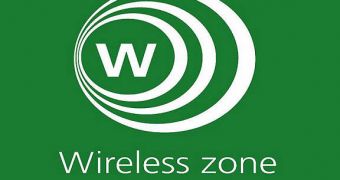More and more people are using Wi-Fi enabled mobile devices in public hotspot locations, this is a known fact based on some of the latest reports, and it seems that the number of those who connect using a mobile phone is also on the rise. According to a recent survey performed by JiWire, 56 percent of the respondents indicated that they connected in such locations through their smartphone or other mobile handsets. At the same time, 14 percent of the respondents said that a handset was the primary means to connect to public Wi-Fi hotspots.
At the same time, the results of the survey also show that, among mobile operating system on handsets used to connect to public Wi-Fi, the market share of Google's Android OS increased 167 percent in Q4 2009, enabling it to secure the second position in the top. The iPhone and iPod touch remain the most popular devices used in these locations, through their market share went down 2 percent in the time frame. The usage of non-phone mobile devices is also on the rise, the survey shows, as three out of top ten mobile devices used for Wi-Fi connectivity in public places are not phones.
“With the proliferation of mobile devices, more people are accessing the Internet outside their homes and offices, whether on a mobile phone, netbook or even a gaming device,” said David Staas, senior vice president, marketing, of JiWire. “Over 890 million new Internet enabled wireless devices are expected to ship this year alone according to Morgan Stanley, revolutionizing how people integrate media into their daily lives and changing the nature of advertising.”
Public Wi-Fi hotspots have been on the rise too, registering a 21.9 percent growth in 2009, and the overall Wi-Fi usage is also increasing, with an 8.2 percent growth registered in Q4 alone. According to the survey, free Wi-Fi sponsored by Microsoft (Bing) and Google registered success, and the usage of the connectivity technology went up by 26 percent in airports following these campaigns. Moreover, the move from data cards to Wi-Fi is also a key driver to the increase in Wi-Fi usage, JiWire notes.

 14 DAY TRIAL //
14 DAY TRIAL //